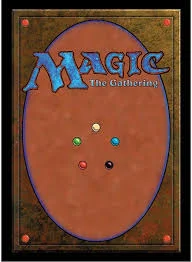With High-Quality Proxies from Proxy King
Magic: The Gathering (MTG) is a strategy, creativity, and skill game. Building a competitive deck is a vital part of the journey to success, but it can also be expensive. Cards in high demand often come with steep price tags, making it difficult for many players to access the top-tier tools they need to compete at a higher level. Fortunately, there’s a solution: proxies. At Proxy King, we provide high-quality proxy cards that are identical in size and feel to official Magic: The Gathering cards, allowing players to compete without breaking the bank.
In this post, we’ll walk you through how to construct a competitive Magic: The Gathering deck and show how proxies can enhance your deck-building experience, giving you access to the best cards in the game.
Step 1: Choose Your Format
The first step in building a competitive Magic: The Gathering deck is determining which format you want to play. Different formats have varying rules and card pools, directly affecting deck construction. Here’s a quick overview of the most popular formats:
- Standard: This method uses the most recent sets and rotates yearly. It’s great for players who like to stay current, but it can be costly as the card pool constantly changes.
- Modern: Includes a much larger card pool from 2003 to the present. Modern decks tend to be more expensive due to the inclusion of older, powerful cards.
- Commander (EDH): A multiplayer format where each deck is built around a single legendary commander and includes 99 unique cards. Commander is a casual format but still competitive at higher levels.
- Legacy and Vintage: These formats have access to nearly every card printed. Due to the availability of extremely powerful and rare cards, Legacy and Vintage decks are some of the most expensive to build.
Once you’ve chosen a format, you can start thinking about what kind of deck you want to build.
Step 2: Pick a Deck Archetype
Every competitive deck falls into one of several archetypes, each with its own strengths and weaknesses. Understanding these archetypes can help you narrow your deck’s strategy and better understand which cards you’ll need. Here are the most common competitive archetypes:
- Aggro: Aggressive decks focus on dealing damage quickly. They prioritize fast creatures and burn spells to overwhelm opponents before they can stabilize.
- Control: Control decks aim to slow the game down by countering spells, removing threats, and gaining card advantage. The goal is to lock the opponent out of the game and win through a slow, inevitable victory.
- Combo: Combo decks focus on assembling specific combinations of cards that create a game-winning effect. Once the combo pieces are in place, the game is effectively over.
- Midrange: Midrange decks aim to balance aggression and control, using efficient creatures and spells to gain incremental advantages throughout the game.
After choosing your deck archetype, you can start assembling the pieces, which leads us to the next step: selecting your cards.
Step 3: Building Your Deck
Now that you’ve identified the format and archetype, it’s time to pick the cards that will form the backbone of your deck. Competitive decks typically include a mix of the following:
- Lands: About 40% of your deck should be lands. For example, in a 60-card deck, you’ll want around 24 lands. Having access to the right amount of mana is critical in competitive play.
- Core Spells: These are the spells that make up your primary strategy, whether creatures, removal spells, or game-winning combos. Your core spells are central to the deck’s function.
- Support Spells: These cards help protect your strategy or provide utility, such as counterspells, card draw, or mana ramp.
When building your deck, sticking to the optimal card choices is crucial. Many competitive cards, like Black Lotus, Force of Will, or Jace, the Mind Sculptor, are expensive and hard to find. This is where proxies can save the day.
At Proxy King, we offer high-quality Magic: The Gathering proxy cards that are perfect for competitive playtesting and casual games. Our proxies match official Magic cards’ size, weight, and feel, so you can seamlessly integrate them into your deck without worrying about mismatched cards or inferior quality.
Step 4: Testing and Tuning
Once your deck is built, it’s time to test and refine it. Playtesting determines how well your deck functions in a competitive environment. Here’s how to approach this process:
- Solo Playtesting: Play several practice games to see how your deck flows. This helps you understand your hand distribution, mana base, and curve.
- Play with Friends or at Your Local Store: Testing your deck in a real game environment can expose its strengths and weaknesses. You’ll learn how it performs against different archetypes and strategies.
- Adjust as Needed: Don’t be afraid to tweak your deck. You might find that certain cards underperform or that your mana base needs adjusting. Constant refinement is part of building a great deck.
Step 5: Proxying Expensive Cards
One of the biggest challenges in deck building is acquiring expensive, high-demand cards. If you’re serious about playing at a competitive level but don’t want to spend a fortune, proxies are a smart solution. At Proxy King, we offer proxies of many sought-after cards, giving you access to the best cards in the game at a fraction of the price.
By using proxies, you can:
- Playtest your deck with optimal card choices before investing in expensive cards.
- Compete in casual games or local events without worrying about damaging valuable cards.
- Build multiple competitive decks without breaking your budget.
Conclusion: Build Your Competitive Deck with Proxy King
Building a competitive Magic: The Gathering deck requires careful planning, testing, and tuning. Following these steps, you can construct a deck ready for competitive play. And with Proxy King’s high-quality proxy cards, you can do it without spending thousands of dollars on rare and hard-to-find cards.
Visit Proxy King today to explore our selection of premium MTG proxies and start building your dream deck. Our proxies match the same size, weight, and feel as real Magic cards, so you can enhance your deck-building experience and compete with confidence.


